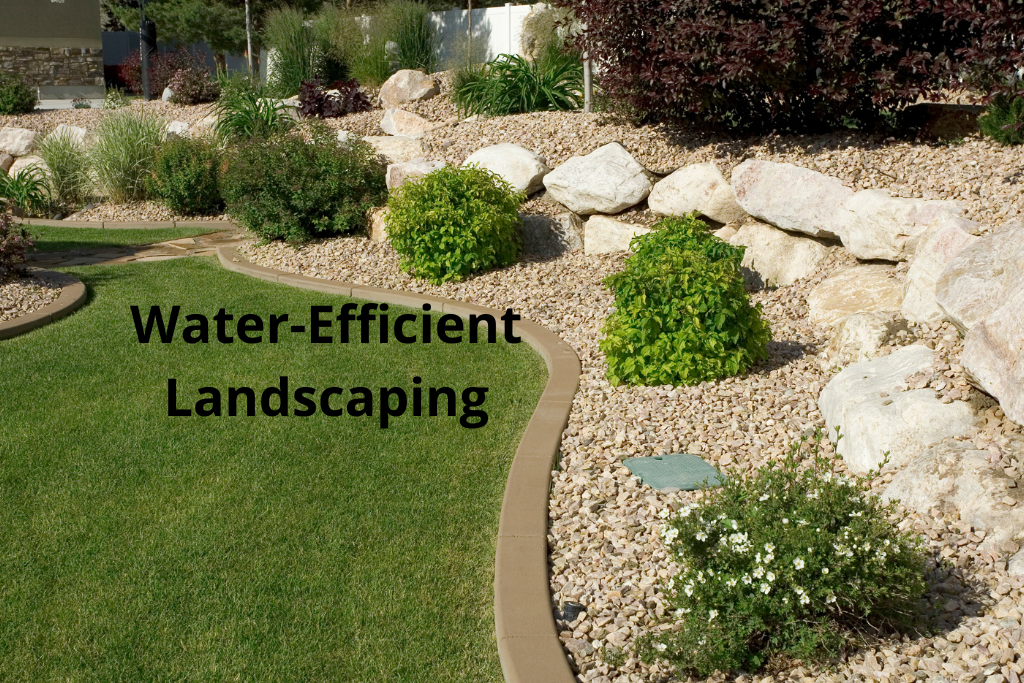Introduction
When it comes to maintaining a beautiful and functional lawn, traditional grass lawns can be resource-intensive and time-consuming. As concerns over water conservation and environmental sustainability grow, many homeowners are exploring alternative landscaping options. Xeriscaping is one such option that prioritizes water conservation, low-maintenance design, and the use of native plants. In this blog, we’ll look at the numerous benefits of xeriscaping and how it can revolutionize your lawn care routine.
1. Water-Efficient Landscaping
Xeriscaping’s primary benefit is its ability to conserve water. Traditional lawns often require significant irrigation, leading to water waste. Xeriscaping, however, relies on drought-tolerant plants that thrive with minimal watering once established.
- Minimal Irrigation:
- Xeriscaped landscapes are designed to reduce the need for irrigation. Plants selected for xeriscaping have adapted to survive in arid conditions and require much less water than traditional lawns.
- Reduced Water Waste:
- By incorporating efficient irrigation systems like drip irrigation and using water-saving plants, xeriscaping minimizes water waste, making it a sustainable option in areas with limited water resources.
2. Lower Maintenance Requirements
Xeriscaping is a low-maintenance alternative to traditional lawns. Since xeriscaped yards require fewer resources and care, they allow homeowners to spend less time maintaining their landscape and more time enjoying it.
- Reduced Lawn Mowing:
- Xeriscaping often involves using plants that require little to no mowing. This reduces your need for lawnmowers and the effort involved in keeping a neat, well-manicured lawn.
- Less Frequent Fertilizing and Pesticides:
- Since xeriscaped plants are drought-resistant and often native, they are less susceptible to pests and diseases. This means fewer applications of chemical fertilizers, pesticides, and herbicides are necessary, reducing your impact on the environment.
3. Environmentally Friendly
Xeriscaping offers several environmental advantages over traditional lawn care practices. It promotes the conservation of water and the reduction of harmful chemical use, both of which contribute to a healthier environment.
- Preservation of Natural Resources:
- By using water-efficient plants, xeriscaping reduces the demand for water, which is especially important in drought-prone areas. This helps preserve valuable natural resources for future generations.
- Promotion of Biodiversity:
- Xeriscaping encourages the use of native plants, which support local wildlife by providing habitat and food sources. Native plants are well-adapted to the local climate and soil, making them easier to care for while also supporting pollinators like bees and butterflies.
4. Enhanced Soil Health
Many xeriscaping plants are designed to thrive in poor soil conditions, which means they often improve soil health over time. Deep-rooted plants can also help with soil aeration, making it easier for water and nutrients to reach plant roots. If you're considering transforming your yard, searching for a lawn care service near me can connect you with professionals who specialize in xeriscaping techniques and sustainable landscaping solutions.
- Improved Soil Structure:
- Xeriscaping plants with deep roots help break up compacted soil, allowing water and nutrients to penetrate more easily. This is especially beneficial for areas with heavy clay or compacted soil.
- Reduction of Erosion:
- The dense root systems of xeriscaping plants help prevent soil erosion by holding the soil in place and reducing runoff.
5. Design Flexibility and Aesthetic Appeal
Xeriscaping doesn’t mean sacrificing beauty for functionality. On the contrary, it offers homeowners the opportunity to create a unique and visually stunning landscape that doesn’t require a lot of upkeep.
- Variety of Plant Choices:
- Xeriscaping allows for a wide variety of plant options, including drought-tolerant flowers, shrubs, grasses, and even trees. These plants come in different colors, textures, and sizes, which can create a beautiful, diverse landscape.
- Creative Hardscaping:
- Xeriscaping often incorporates hardscape elements like gravel paths, stone walls, and decorative rocks, which not only enhance the design but also reduce the need for grass, further decreasing water usage.
6. Increased Property Value
As sustainability becomes a more significant factor for homebuyers, xeriscaping can increase your property value. Homes with eco-friendly features like xeriscaping are seen as desirable and can be more attractive to buyers who are interested in water conservation and low-maintenance yards.
- Appeal to Eco-Conscious Buyers:
- Xeriscaping aligns with the values of environmentally-conscious buyers who prioritize sustainability. Homes with xeriscaped lawns can stand out in the market, increasing your home’s appeal and resale value.
Conclusion
Xeriscaping offers a host of benefits that make it an attractive alternative to traditional lawn care. From water conservation and reduced maintenance to environmental sustainability and enhanced soil health, xeriscaping allows homeowners to create a beautiful, functional yard with minimal effort. Whether you live in an area with water restrictions or are simply looking to reduce your lawn care costs, xeriscaping provides a practical and eco-friendly solution that benefits both you and the planet.





Comments